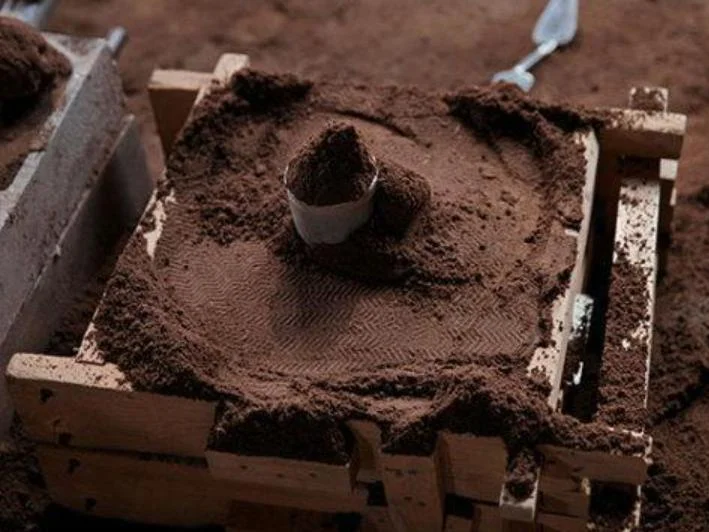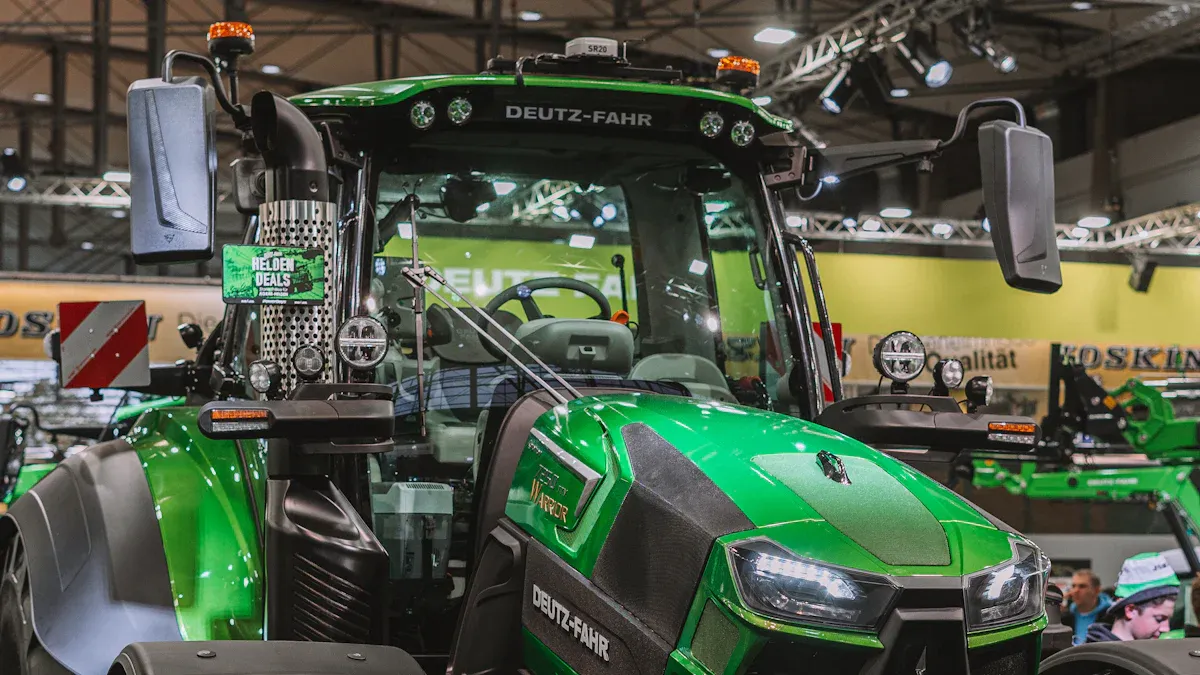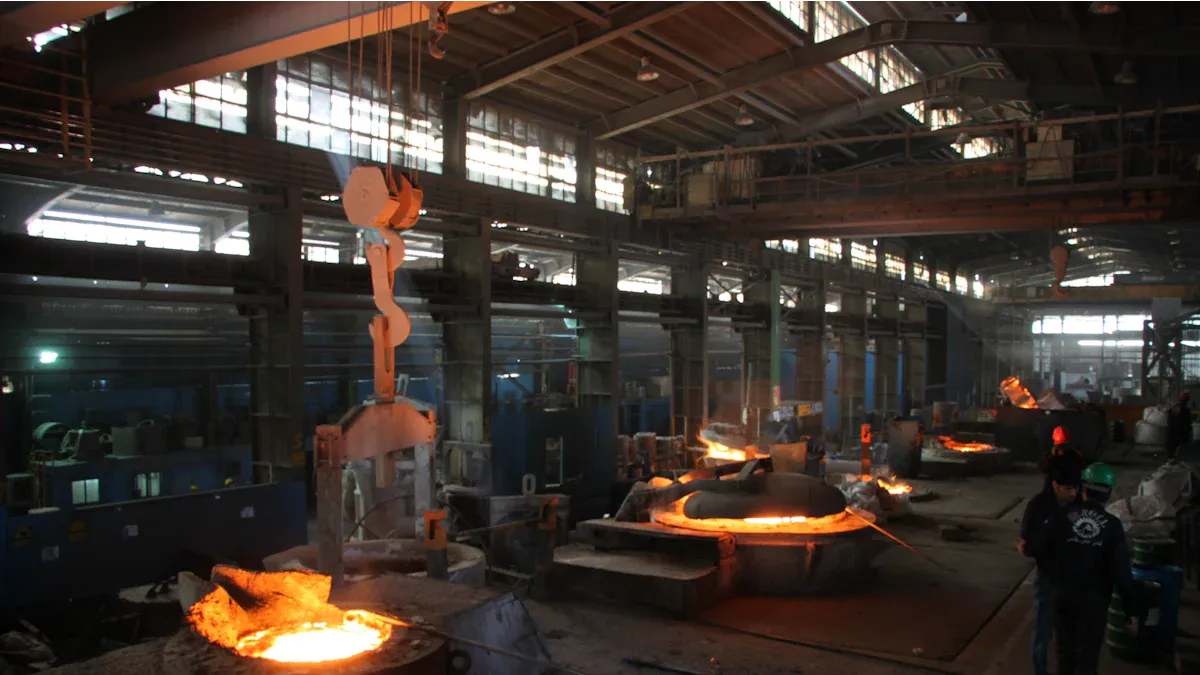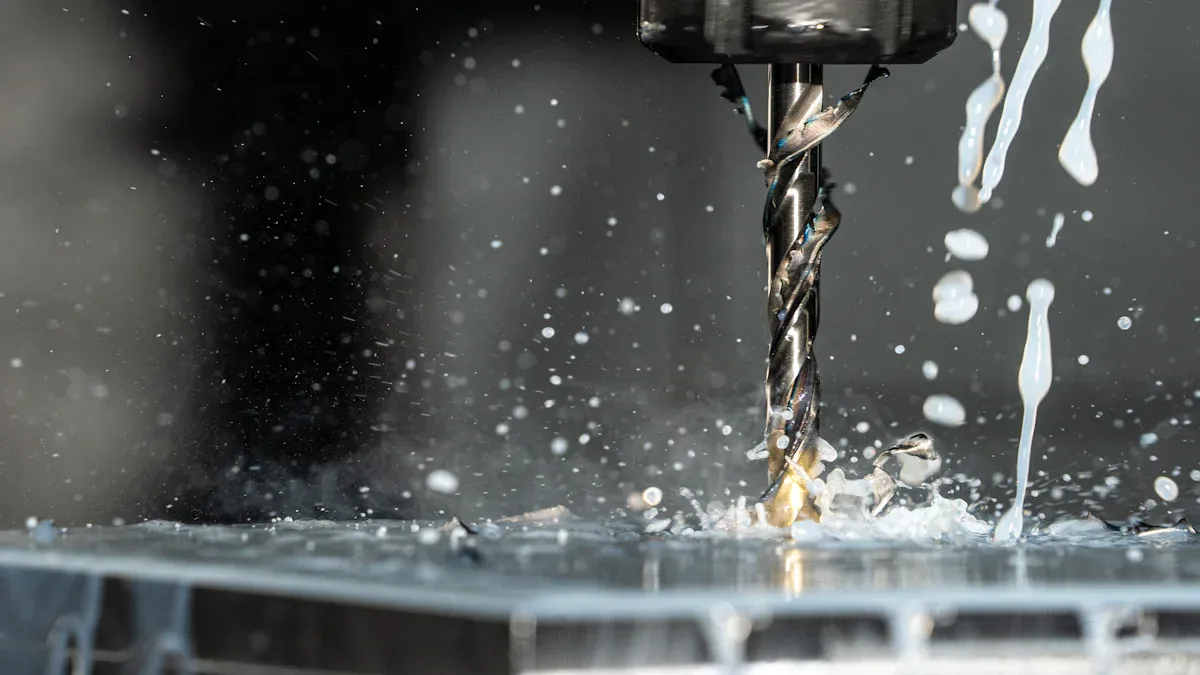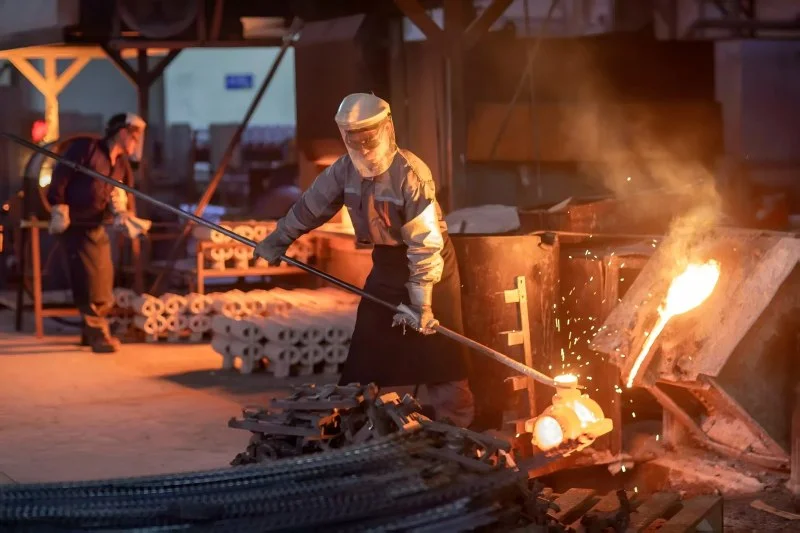
Investment Casting is essential for creating innovative products in factories, providing highly precise and detailed components. The investment casting process produces parts with tight fits and smooth surfaces, making it superior to other methods for crafting complex shapes. KEMING As Your Investment Casting Manufacturer boasts over 20 years of expertise, serving industries that require exceptionally accurate parts, including automotive, aerospace, and machinery. The global market for investment cast steel is projected to grow significantly, reaching $23.01 billion by 2024. What can KEMING do for you? KEMING offers robust solutions for challenging applications.
Sector | Adoption Rate | Growth Drivers |
|---|---|---|
Automotive | Highest | Need for tricky, light, and strong parts |
Aerospace | Fastest | Want for exact, light, and tough parts |
Machinery | Vital | Need for strong parts for hard places |
Key Takeaways
Investment casting makes parts that are exact and detailed. This helps industries like cars and planes.
The lost wax method gives smooth surfaces and close fits. This means less extra work is needed.
Investment casting uses less material, so it saves money. It also helps the environment.
KEMING has more than 100 materials for investment casting. This lets them make special parts for many uses.
Investment casting works for small or big batches. It can also make very detailed shapes.
Investment Casting Process
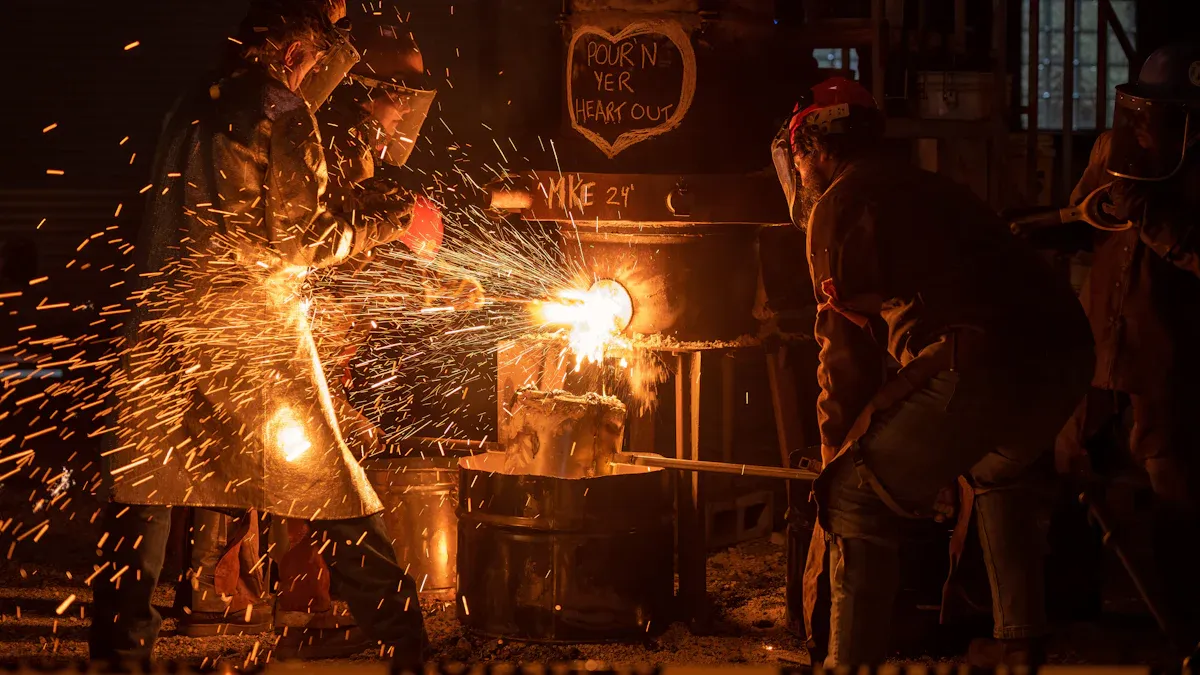
Process Steps
Investment Casting has many careful steps to make steel parts. Each step helps make sure the parts are correct and good quality. Here is how it works:
Tooling Making: Workers make special tools called molds. These molds shape the wax patterns to look like the final part.
Wax Injection and Pattern Assembly: Wax goes into the molds to make wax patterns. The wax patterns are put together on a wax tree.
Shell Coating: The wax tree gets dipped in a ceramic liquid. This makes a hard shell that can handle heat.
Wax Removal (Lost Wax Process): The shell is heated up. The wax melts and runs out, leaving a hollow shell.
Pouring Molten Steel: Hot steel is poured into the shell. The steel fills the empty space left by the wax.
Shell Removal and Finishing: When the steel cools, the shell is broken off. The steel part is cleaned and finished.
KEMING uses CNC machines and careful machining to make each casting better. Their factory checks quality with tests for chemicals, strength, and size. These checks help every part meet world standards.
Some parts made this way are pump impellers, valve bodies, piston rods, and surgical tools. These parts need to be very exact and smooth.
Materials Used
Investment Casting can use many different materials. Each one has special features for certain jobs.
Material Type | Properties and Applications |
|---|---|
Stainless Steel | Very strong; used for gearbox parts, gears, camp parts, and golf club heads. |
Low Alloy Steel | Not expensive; strong; can be made tougher and last longer. |
Carbon Steel | Cheap; many types; gets stronger with heat; used in motors and home machines. |
Super Alloy | Made from nickel and cobalt; used in planes, energy, medicine, chemicals, and ships; very stiff. |
KEMING knows how to work with over 100 materials. This helps them make special parts for many jobs.
Lost Wax Technique
The lost wax technique is the main part of Investment Casting. This way makes parts that fit well and look smooth.
It starts with a wax pattern that is very detailed.
The pattern gets covered with ceramic to make a shell.
Heating melts the wax, leaving a space for steel.
This way has many good points:
Smoother surfaces
Parts can be made to fit very closely (as close as ±0.005)
More choices for alloys
The lost wax technique lets KEMING copy CAD designs very closely. This helps in fields like aerospace and medicine, where exact sizes are very important.
Benefits of Investment Casting
Precision and Complexity
Investment Casting makes parts that fit together very well. Makers can measure length, holes, and curves with great care. This way helps build shapes that are hard to make with other methods.
Length
Concentricity
Fillet radii
Holes
Straightness
Corner radii
Flatness
Curved holes
If you compare casting ways, Investment Casting is the most exact.
Casting Method | Linear Tolerance Range |
|---|---|
Investment Casting | CT5-CT8 |
Water Glass Lost Wax Casting | CT7-CT8 |
Lost Foam Casting | CT8-CT9 |
Silica Sol Casting | CT5-CT6 |
This accuracy helps parts work well and last longer. KEMING uses special CNC machines and checks every part for quality. The process lets makers create tricky designs for many jobs.
Investment Casting is a very exact way to make parts. It follows ISO 8062 rules for size, so it is great for important uses.
Surface Finish
Parts made by Investment Casting have smooth surfaces. This means less polishing or fixing is needed. Different alloys give different looks, but the finish is always fine.
Alloy Type | As-Cast Ra (µm) | Notes |
|---|---|---|
316L Stainless | 1.2–1.4 | Passive oxide forms quickly; thicker film can imprint slight texture |
17-4 PH Stainless | 1.0–1.3 | Martensitic microstructure; heat treatment refines surface defects |
A2 Tool Steel | 1.2–1.5 | Shell must mitigate reactivity to preserve finish |
Aerospace parts need Ra ≤ 0.8 µm ± 0.2 µm.
Medical implants need Ra ≤ 0.2 µm ± 0.05 µm.
Most industrial parts have Ra ≤ 1.2 µm ± 0.3 µm.
KEMING makes sure every part looks good and works well. Their skill helps many industries get the finish they need.
A smooth finish helps parts last longer and work better. It also saves time and money because less fixing is needed.
Material Efficiency
Investment Casting helps makers use metal wisely. Parts come out close to their final shape, so there is less waste. Thin walls use less metal, making parts lighter.
Benefit | Description |
|---|---|
Near Net-Shapes | Shapes are close to the final product, reducing excess material. |
Tight Tolerances | Precise dimensions minimize the need for further machining. |
Thin-Walled Components | Lightweight parts use less material, contributing to waste reduction. |
The process makes shapes that other ways cannot.
High accuracy means less extra work.
The ceramic shell gives a smooth finish, so less fixing is needed.
KEMING’s smart ways help save metal and money. Making near-net shape parts means less work and faster making times.
Using less material lowers costs and helps the planet. Makers can build more parts with fewer resources.
Applications in Steel Manufacturing
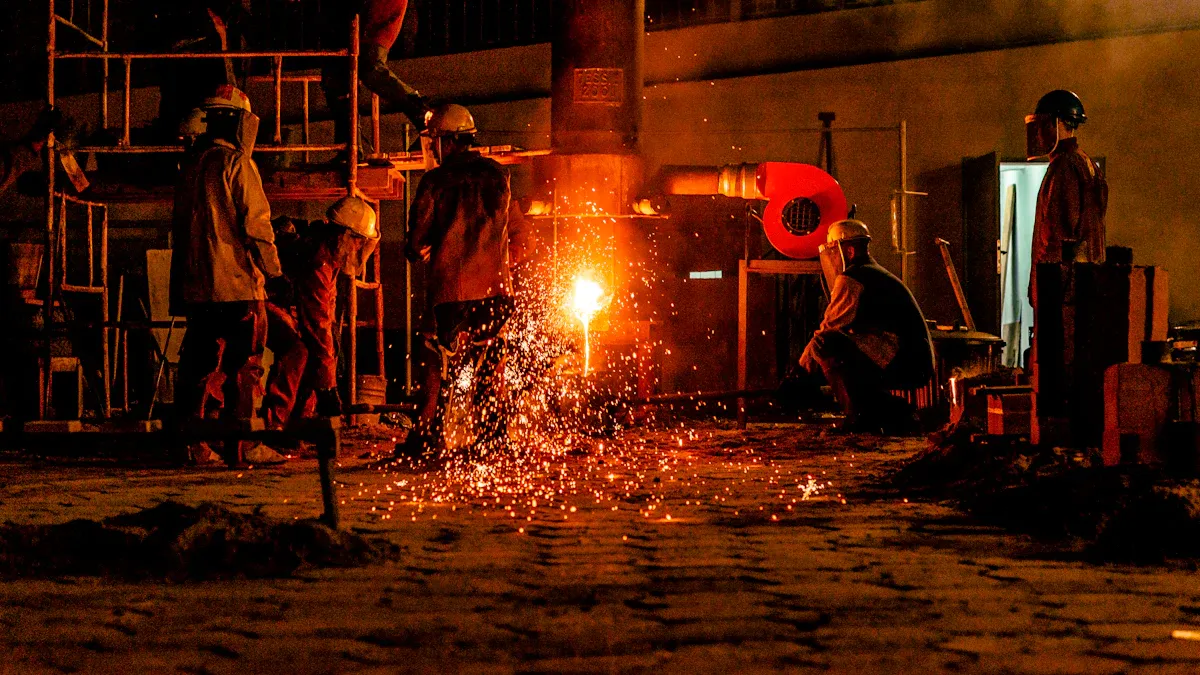
Automotive Industry
Car makers use investment cast steel for many key parts. This process makes strong and exact pieces that help cars work well and stay safe. Some common uses are:
Engine parts like cylinder heads and crankshafts
Transmission pieces such as gearbox housings and clutch parts
Suspension items, including control arms and knuckles
Turbocharger wheels and housings
Safety parts like brake calipers and ABS housings
These parts need to be very strong and accurate. KEMING has made thousands of car parts. They use over 100 materials to fit each need.
Aerospace Components
Aerospace companies want parts that are light and tough. Investment casting helps make tricky shapes and close fits, which are very important here. The table below lists some usual aerospace uses:
Application Type | Description |
|---|---|
Aircraft Engines | Exact castings for top performance and safety |
Controls Housings | Strong parts for steady operation |
Rocket and Satellite Propulsion | Tricky shapes that meet strict rules |
Defense Ordnances | High-precision, tough pieces for military use |
HVAC Components | Parts that handle changing conditions |
Seating and Cargo Handling Equipment | Safe and steady parts for people and cargo |
KEMING has made many aerospace parts. They make sure every part is top quality.
Industrial Equipment
Factories use investment cast steel in lots of machines. These parts need to last long and work in hard places. Common parts are:
Component Type | Examples |
|---|---|
Housings | Yes |
Shafts | Yes |
Levers | Yes |
Rods | Yes |
Linkages | Yes |
Other parts | Yes |
You can find these parts in airport baggage systems, conveyor lines, food machines, and building equipment. KEMING has made over 5,000 products for factories. They know how to pick the right material for each job.
KEMING’s work with 5,000 products and 100 materials shows they can help many industries with strong investment cast steel parts.
Comparing Casting Methods
Investment vs. Sand Casting
Investment casting and sand casting both make steel parts. They are different in many ways. Investment casting uses a ceramic shell. This gives parts a smooth surface and tight fit. Sand casting uses sand molds. Parts from sand casting are rough and less exact. Look at the table to see how they compare:
Aspect | Investment Casting | Sand Casting |
|---|---|---|
Surface Finish | Significantly smoother | Usually rough |
Dimensional Tolerance | High (CT 4-6) | Lower (CT 10-13) |
Wall Thickness | Thin walls possible | Minimum 3 to 5mm |
Investment casting can make thin walls and tricky shapes. Sand casting is better for big parts. It needs extra work to make surfaces smooth.
Investment casting makes parts that fit better and look nicer. Sand casting is good for big, simple parts.
Investment vs. Forging
Forging shapes steel by pressing or hitting it. Investment casting pours hot steel into a mold. Investment casting does not need costly tools like forging. Forged parts can have uneven stress inside. Investment cast parts do not have this problem. Here are some main differences:
Investment casting costs less for tools.
Forging costs more because of special tools and extra work.
Investment casting is good for small batches.
Forging works better for bigger batches.
Investment casting can use many metals, like steel and special alloys. Forging is best for parts that need extra strength.
Cost and Scalability
Investment casting saves money by using less metal. It makes parts close to their final shape. The process can make thin walls, sharp corners, and tricky inside shapes. This means less waste and easier to make more parts. Investment casting works for small and big orders.
Investment casting is great for making detailed parts with steady sizes. It is good for jobs that need fine finishes and tight fits, for a few or many pieces.
When to Choose Investment Casting:
Need for exact, tricky shapes
Want smooth surfaces without much fixing
Small or big production runs
Use of many kinds of metals
Investment casting is best when you need accuracy, detail, and to save material.
Choosing Investment Cast Steel
Design Needs
Engineers think about many things when making parts. The size and shape of the part matter a lot. If the part is tricky, investment casting works better than other ways. Designers also look at wall thickness and how smooth the surface is. They check how much extra work the part will need. The table below lists what to think about:
Design Consideration | Description |
|---|---|
Size and Shape of Casting | How big and what shape the part is can change the process. |
Gating Design | Good gating keeps the part steady and helps avoid marks. |
Tolerances | Most parts have a tolerance of +/-0.010″ for the first inch. |
Surface Finish | The finish is usually 125 RMS, which is smooth and keeps its look. |
Complex Geometries | Investment casting lets makers build hard shapes and join parts. |
Wall Thickness | Walls should be at least 3/16″ thick for best results. |
Machining Requirements | This process needs less extra material and makes machining easier. |
KEMING gives OEM and ODM services. They help customers turn ideas into real parts with custom plans.
Production Volume
How many parts you need matters a lot. Investment casting is best for less than 10,000 parts each year. It works well for tricky parts that do not need much extra work. Small and medium batches can change designs easily. You do not pay much for new tools. If you need lots of parts, forging may save more money. KEMING can make small or big batches. Their lines let customers grow their orders when needed.
Material Selection
Picking the right material helps parts work well and last long. Engineers look at things like strength and hardness. They also check if the part can resist rust. The table below shows what matters:
Property | Importance |
|---|---|
Yield Strength | Tells how much weight a part can take before it bends. |
Ductility | Shows how much a part can stretch or bend. |
Hardness | Makes parts last longer and fight wear. |
Weldability | Some steels are easier to weld than others. |
Corrosion Resistance | Stainless steel does not rust, so it is good for wet places. |
Weight | Lighter metals help in cars and planes. |
Temperature Resistance | Some metals work better in hot places. |
All metals get an oxide layer, which can make steel rust.
Stainless steel is good for wet and marine places because it does not rust.
Lighter metals like aluminum make parts weigh less but stay strong.
KEMING’s team helps customers pick the best metal for each job. They make sure every part fits what it needs to do.
Investment cast steel has lots of good points for making parts. It helps make strong and detailed pieces. The table below lists the main benefits:
Advantage | Description |
|---|---|
Complex Geometries | Makes shapes that other methods cannot achieve. |
Tight Tolerances | Holds close measurements for better fit. |
Exceptional Surface Finishes | Gives smooth surfaces with little extra work. |
Reduced Lead Times | Delivers parts faster with less finishing needed. |
Lower Tooling Costs | Needs less money for tools. |
Versatility in Material Use | Works with many types of metals. |
Many real-life examples show investment casting is very exact. It also gives smooth surfaces on the parts. KEMING is a trusted company for this work. Their factory uses new machines and has skilled workers. They check every part to make sure it is good. Companies can pick investment casting for their next job. They will get these great benefits.
FAQ
What is investment cast steel?
Investment cast steel is steel made by investment casting. This way uses a wax shape and a ceramic shell. It helps make parts that are very detailed and exact. Many companies use investment cast steel because it is strong and fits well.
Why do manufacturers choose investment casting?
Manufacturers like investment casting because it makes tricky shapes. It keeps sizes close and parts fit together well. The process gives smooth surfaces, so less fixing is needed. It also works with many different metals.
How does investment casting differ from sand casting?
Investment casting uses a ceramic shell to shape the part. Sand casting uses sand molds instead. Investment casting makes smoother and more exact parts. Sand casting is better for big and simple shapes.
What industries use investment cast steel parts?
Car, plane, and machine companies use investment cast steel. These parts are found in engines, planes, medical tools, and factory machines.
Can KEMING make custom parts?
KEMING can make special parts for each customer. They offer OEM and ODM services for many jobs. Their team can use drawings or samples to make new parts. They help many companies with custom solutions.

